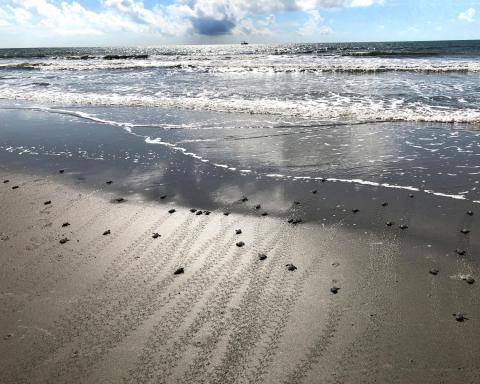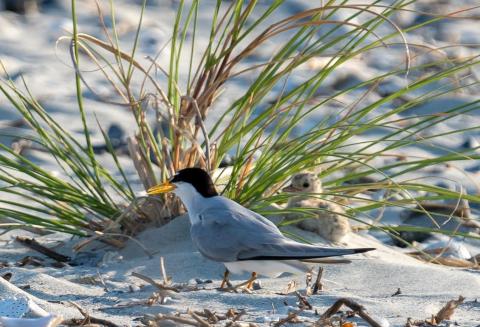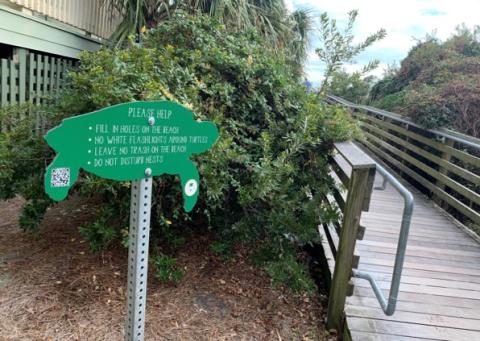Education and Protection of Wildlife on the Island
Information about Sea Turtles
Each summer our beach is a place where dozens of turtle nests are laid. The loggerhead sea turtle is the state reptile for South Carolina. Here are ways you can help:
- Beachfront Lights Out! Lights shining on the beach at night confuse and disorient turtles. Close any beach-facing blinds or curtains, turn off any lights that are visible from the beach, and shield essential lighting.
- Leave Only Footprints. Take all of your trash, chairs, umbrellas and other gear off the beach to allow the turtles barrier-free access to potential nesting sites.
- Fill in Holes at day’s end. Open holes or deep depressions can trap turtles or tiny hatchlings.
- Do Not Disturb. If you see an adult sea turtle or hatchlings on the beach, watch quietly from a distance. Do not approach. Do not use flashlights or use flash photography.
- It’s an Emergency if you see an injured or dead sea turtle on the beach or in the water, a nest in jeopardy due to a high tide, or a nest that is hatching with hatchlings headed away from the ocean.
CALL IOP Police at 843-886-6522 or SCDNR at 1-800-922-5431
Loggerhead Facts
- Mature sea turtles weigh over 200 lbs.
- Adult loggerheads are reddish brown above and creamy gold below.
- 40-50 nests are found on the Isle of Palms every year.
- Each nest averages 120 ping pong ball sized eggs.
- Hatching occurs 45-60 days after a nest is laid.
- Females can nest as many as six times a season at two week intervals.
- Nesting females avoid lighted beaches.
- Hatchling turtles are attracted to light and often go the wrong way due to street and landscape lighting.
- Though other species visit the SC coast, only loggerheads regularly nest here.
Shorebirds
The Isle of Palms is a place where many migratory shorebirds rest, feed, and nest. Birds on the public beach may be disturbed many times a day. They need time to rest and feed if they are migrating, sometimes going thousands of miles on their journey. State Threatened Least Terns and Plovers often nest on the Isle of Palms. You may see a marked off area where people and pets should NOT walk or run.
Do’s and Don’ts:
- Do leash your pets when birds are nearby.
- Do move around flocks and not through them.
- Do Not let your pets chase birds or disturb nests.
- Do Not try to get close to shorebirds.
- Do Not create loud noises near flocks.
For more information on shorebirds go to: SC.audubon.org/coasts



